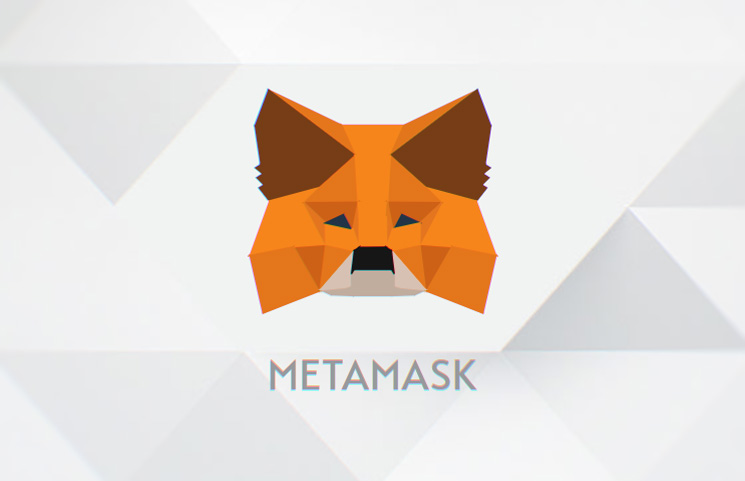Cryptocurrency Investing
Top 25 Cryptocurrency Investing Tools and Bitcoin Trading Resources

Tools and Resources for Crypto Investors
Despite popular belief, you don’t need to be technically minded in order to invest in cryptocurrencies, but you should spend the time to learn the basics of how they work. There are numerous resources that can be found online that detail cryptocurrencies and the blockchain, such as the Wikipedia articles for both of those subjects.
Besides those 2 articles above, you should ready yourself with a range of informational sources. For your convenience, we have compiled a great list of tools and sites that are worthy for you to bookmark.
Table Of Contents
Market information
- http://coinmarketcal.com: Keeping afloat of everything that is going on in the world of cryptocurrencies can be a tall order. So wouldn’t it be easier if there was some kind of calendar that you can reference when you need to? This is where coinmarketcal comes in, as it shows you each upcoming crypto event, such as product releases, exchange listings, and coin burns. You can even filter through the different kinds of events and their timeframes.
- http://coin.fyi: Good resource for following sites related to certain cryptocurrencies.
- http://cryptopanic.com: A news aggregator that can show you the different crypto news sites. Filterable.
- http://coinspectator.com: Yet another aggregator that contains over 100 different sources of news for cryptocurrencies.
- http://cowl.com: News from major cryptocurrency sites such as Coindesk and Coin telegraph in one easy to read page.
- http://cci30.com: Similar to an S&P500, except for cryptocurrencies. It has an index of the 30 biggest cryptocurrencies.
- http://eveningstar.io: This is the equivalent to the Morning Star of news, except for cryptocurrencies.
- http://icotracker.net: This is a good site for seeing what ICOs are due to be released to the market.
Analysis Tools
- http://cryptowat.ch: Excellent charting tool that gives you a wide look at the performance of cryptocurrencies across exchanges.
- http://coinmonsta.io/metrics: This gives you an idea of what the most shilled coins are on Twitter. It gives you a ranking of the number of tweets versus the sentiment to arrive at an overall score.
- http://onchainfx.com: Arguably a better version of coin market cap, as it has all kinds of information and columns that you can see. We like their segmentation filters for easy viewing.
- http://www.sifrdata.com/: Easy visualizations of various metrics. Most people find that their correlations are very useful when it comes to choosing the right cryptocurrency to purchase.
- http://iconomi.net/dashboard: This shows different kinds of EFTs from cryptocurrencies. It’s a good place to get some ideas for your investment portfolio.
- http://cointrading.ninja/correlation: Shows a matrix of price movement correlations between cryptocurrencies over different speeds.
Portfolio Tracking
Delta and Blockfolio are considered to be the major trading mobile applications. Most people prefer using Delta.
For desktops, there is the CoinMarketCap API in Excel that helps draw in live data from the website. Since the app is made in Excel, you can then customize it for your needs. There are a lot of different tracking sites that you can use such as AltPocket, too.
YouTube
There are not too many resources to follow on YouTube if you are after independent tips, as this site is dominated by figures such as Trevon James and Crypto nick. But there are others too that could be worth your subscription.
- Crypto Investor: His background in finance gives this channel a much more educated and sophisticated approach, and the channel posts regular high quality content on psychology. To avoid imbalance, the channel also posts a lot of criticism about the slights that the crypto sector has experienced.
- Coin Mastery: Coin Mastery is the channel name for Carter Thomas. Thomas claims to take a rational mid to long term strategy when it comes to cryptocurrency investing, and has been featured numerous times in other media.
- IvanOnTech: This guy brings a programmers perspective to the investment world. He even goes through Github to explain the various programming issues that the blockchain faces.
Creating an Investment Strategy
You should not underestimate how important it is to have an actual investment strategy that can meet your goals. Think about what you want and how much tolerance for risk that you have, and put a plan into place for what your portfolio is going to look like. Consider how you will get to those goals instead of just chasing the next shiny object.
Having a strategy is crucial as it will make you slow down and think about each decision before you make them. This is will mean that each of your decisions will be made via rational thinking instead of emotion, and will make your choices more profitable over the long-term.
Setting ROI targets
To put it bluntly, too many investors who are new to industry have fantastical notions about the kind of returns and the amount of risk they are exposing themselves to.
Many people have never made an investment before cryptocurrencies, which makes them think that a 10% return in a month to be not worth their time, even though that is the ideal target that they should be aiming for.
You can see a lot of people on Reddit and other sites making their decisions based on false expectations to double their money each month. This has caused a huge amount of new investors putting too much of their money into these coins too quickly, getting their tips from sites such as CoinMarketCap with a low dollar per coin. These people are hoping that their investments will help them get out of debt quickly, or to escape a life of drudgery inside a cubicle.
For this reason, it’s important to keep the hype and sensationalism in mind when it comes to investing in cryptocurrencies. Realize that the reason why people made so much money back in 2017 was due to the market’s volatility. It wasn’t because the coins suddenly became a mainstay of investments, nor has their adoption increased. The only reason we saw such impressive gains was because people bought in due to the fear of missing out (FOMO). People are hoping to ride the bubble and sell their coins to someone else over the next few months.
We exceeded the $10k point again for Bitcoin, which hasn’t happened since the Mt. Gox hack, and it just snowballed from its hype and positivity in the market. Headline and headline came out that showed people were making millions from a relatively small sum of money. It should be noted that those returns of 10% each month are not normal; in fact, it is actually dangerous for type time of investment.
To put it into perspective, here are the returns that Bitcoin relieved since 2012:
Year
2017
2016
2015
2014
2013
2012
BTC Return
1,300%
120%
35%
-60%
5300%
150%
It’s important to keep in mind that a 10% increase with compounding interest accumulates to a 300% yearly return, which is just over 3x of your money. This might not sound like exciting to news for people who have just entered the market with dollars in their eyes. After all, some people have seen their money goes up 20x on a coin like Tron before experiencing a major price correction. Yet that 3x yearly return is better than the return of Bitcoin each year except before the market meltdown of 2017.
Due to the huge price increases of Bitcoin, investors should expect and plan for a major price correction and set realistic expectations for their crypto portfolio in the future.
Setting an ROI target
So, how do you go about setting your personal return on investment target? A good (and realistic) rule of thumb is to set a portfolio return of around 385% each year, which is amount 11.9% each month when compounding in factored in. This number is realistic as it is based on the average compounded annual growth over the last 4 years of the market.
Year
Jan 1, 2014:
Jan 1, 2017:
Total Crypto Market Cap
$10.73 billion
$615 billion
Compounded annual growth return (CAGR): (615/10.73)1/3 = 385%
A viable strategy is to hold on to the coins for a few years, but then sell part of the portfolio each December and buy back into the market at around January. You should also revaluate the coins that they have in your market, although keeping your coins for 3 years is needed to ride through the swings of the good and bad. This method should work for most people as a general guideline as it includes the years that the coins do good and bad. In the short term, you may find that your returns are under 100%, yet we are still in the opening stages for this class of investment.
Once you have established your target, you can then construct your risk profile of low and high risk coins. If you’d like to shoot for a higher CAGR than 300%, then it’s likely that you’ll need to go for more speculative options. Your target is up to you, but ensures that it’s not dependent on you getting vertical parabolic price attraction in small cap coins.
The most recent January dip showed that while core coins such as Bitcoin and Ethereum would dip a certain percentage, the altcoins would dip to often double or triple that correction. This means that it’s a very fragile market, and the kind of stupid decisions that people were making made it profitable. This bull market has its consequences. People jumped on the bandwagon before thinking about the adjusted returns of their risk. The same mentality will be used to blame the deflation of the bubble, whether that finger is pointed towards Wall Street, Bitcoin Futures, or an overseas government.
No one who put money into garbage coins that have no case or utility will accept that they are responsible for their own actions. Nor will they admit that they had unreasonable expectations for the gross mispricing of cryptocurrencies.
Risk Management
Understanding your risks in cryptocurrencies can be a difficult endeavour, due to the fact that historical returns are not typically distributed, this means that tools like the Sharpe Ratio and other metrics cannot reliably be used as they were intended. Instead, you’ll be required to consider your own risk tolerance and evaluate the amount of risk that each crypto has based on the project, team, and use case.
You can consider each crypto as having a factor of risk that encompasses the whole crypto market. Everything is inherently tied to the price of Bitcoin: if the price falls, so do other coins, and if it rises, so do the altcoins. Yet it still has its own risk tied to the value of the coin.
The risk of the cryptocurrency market is something that cannot be avoided. For example, if there is some fear and doubt (FUD) in China and this puts regulations on Bitcoin, then your choices in altcoins will go down in value along with Bitcoin. This return is essentially the risk that you are subjecting yourself to reach your goal of a market ROI of 385%. You can minimize part of this risk by looking through the coins that have the best teams or optimal market prospects. However, there is no way you can predict this 100%. You can only take the time to do your own due diligence and form a personal opinion for how risky these ventures are going to be. Look at the pros and cons of each coin and look for the following red flags:
- Guaranteed returns
- Float allocations that benefit the founder more than anyone else
- Vague whitepapers
- Unrealistic timelines
- No clear use cases
- Githhub that lacks code or sparse activity
- A team that is anonymous, or difficult to find information about
While it’s true that every cryptocurrency is a risky investment, you can usually break down the market in low risk and high risk investments:
Low Risk
A low risk crypto is one that is well-established. These coins are sure to be around in the next 5 to 10 years, and will recover even in the midst of a bear market. Cryptocurrencies such as Bitcoin, Litecoin and Ethereum fall into this class, as well as Monero.
Medium Risk
Medium risk coins would be ones that are established, but have a higher risk than others. Think names like Zcash, Ripple and NEO.
High Risk
High Risk coins are anything that has come out in the last few months. Coins that have low caps, ICOs, etc. It should be noted that most cryptocurrencies are in this category, with them likely to be worthless within the next 5 years.
So how much risk should you expose yourself to? That depends on your age and life situation, yet it should also come down to your financial expertise and your experience in financial analysis and tech. So, if you are a new to the game of cryptocurrencies and don’t understand the tech behind it, then your risk tolerance should be much lower than a programmer who gets the market.
Right now, the big 3 coins are Ethereum, Bitcoin, and Litecoin. Together, each coin accounts for 55% of the total market capitalization. This means that a starting point of 50 to 70% of your portfolio in these coins would be a good start. Then you can dip into the more speculative coins as you gain both confidence and experience. But always keep about a third of those coins in safe positions. Don’t go all in on speculative coins.
Core Principals To Minimize Your Risk
Important: Invest only what you can afford to lose, and don’t have more than 5 to 10% of your net worth in cryptocurrencies.
You should have the majority of your coins in things that you have positive feelings about for a minimum of 2 years. Do not use most of your investment for day trades or trading in the short-term.
Consider the use of dollar cost averaging to enter a position. This means to invest a certain amount over several periods, instead of all at once. You can also use a downward dollar cost averaging to reduce against downward risk. For example, instead of putting in $1000 at once in a position at the market price, you can buy $500 at the market price and then apply limit orders at lower intervals. For example, $200 at 4% lower than the market price, $200 at 9% lower than market price. This means that your average cost for each acquisition can be lower if the crypto declines over the short term.
One thing that should be mentioned is to not chase a pump. It is too risky as cryptocurrencies are inefficient and unregulated. If you chase pumps on a consistent basis, ten you run the risk of losing most of your money as those decisions will be based on the fear of missing out, which is the same as gambling.
Important: Invest only what you can afford to lose, and don’t have more than 5 to 10% of your net worth in cryptocurrencies.
Think about what amount of loss you cannot accept in a position with a high risk factor, and use stop limit orders to protect against sudden crashes. Set your stop limit at around 10% above your lowest limit. Although stop limits are imperfect, they are still better than not having a strategy at all, especially in the case of a crypto meltdown. But only you can decide what coins to invest in and what bags you’ll hold at the end of the day.
Diversify your holdings across multiple coins and re-balance each of your allocations periodically. Remember to hold 1/3 of your coins into low risk holdings.
Keep some of your fiat in reserve inside a FDIC insured exchange such as Gemini. Be ready to add to your wining positions during a pullback or correction.
Keep in mind that you don’t actually make money until you withdraw your profits, so take your money out when everyone else is in their FOMO bubble. This will mean that you will sleep much better once you take out the money from your principal investment.
Portfolio Allocation
Besides thinking about your portfolio in terms of risk categories, it’s also helpful to consider what segments you are in.
Along with thinking about your portfolio in terms of risk categories described above, I really find it helpful to think about the segments you are in. OnChainFX has some segment categorizations to consider.
These segments can range from tokens that are used with applications through to stores of value such as Bitcoin.
The key point is to invest your medium and high risk selections in a segment that you understand fully, and in which you can judge the risk accurately. If you don’t understand enough about how banking works or SWIFT international layers, then don’t put your money into a coin such as Stellar. If you don’t get how a supply chain functions, then don’t put your money into VeChain.
Buffet calls this method of knowing what you have your money in “circle of competence”. Buffet invests in areas that he is comfortable with and avoids those that he doesn’t. Doing the same with cryptocurrencies could be a smart move.
It’s interesting to note that we see coin-like movements often. For example, when a coin from one segment pumps in value we will also see a related coin in the same segment increase in price e.g. Stellar following after Ripple.
Think about the historic correlations between the coins you invest in. Typically, when Bitcoin jumps in value, altcoins drop in value, at what rate depends on the type of coin. Yet when Bitcoin sees lateral movement we can see altcoins pump. If Bitcoin goes down, so does everything else.
Our Final Thoughts
This guide was written to get you to consider what return targets you should aim for with your portfolio and how much risk you are willing to take on. We also discussed what strategies you can take to mitigate those risks.
Finally, a return of around 385% might be a good starting point to work with, as this is the average CAGR over the past 3 years. You can tweak this number based on your risk appetite whilst still being realistic. What kind of crypto coins you choose need to be determined by your greed factor for above market returns. A portfolio that has 50% core holdings and 30% in medium risk and 20% in high risk coins is probably what your portfolio should look like. Newbies should aim for 70% core and 5% speculative.
Just by thinking over these things it’s possible that you’ll do better than most other crypto investors, just because most people don’t have a plan or strategy in place for their investments.
Cryptocurrency Investing
MetaMask: Ethereum ERC20 Token Wallet Browser Extension Beginner’s Guide

The Beginner’s Guide to MetaMask
For those new to Ethereum or perhaps even cryptocurrencies in general, the name MetaMask has probably already popped up in conversations. MetaMask is essentially a browser extension, and acts both as a wallet and access point to the Ethereum network. Explained even simpler, MetaMask is a hot wallet.
On the blockchain cryptocurrency networks, users can opt for a hot wallet (“live” or actively connected to the network) or a cold wallet (disconnected from the network). A wallet is necessary to store personal altcoins off exchanges or anywhere else after trading or transacting.
Although many early exchanges act as a bank for digital traders, current wisdom dictates that users maintain their funds offsite. In addition, a user will very often need to fund a trading account from a wallet, as many don’t allow for fiat or legacy payment protocols.
There are pros and cons to both, and current trends see most users employing the duo as their needs dictate. A hot wallet can be accessed and pilfered through phishing or user error, whereas a cold wallet is dead to the network, allowing no access at all. A cold wallet is also sometimes called a vault, as it’s silent, secure and access-restricted.
Many users will encounter the name when looking at ICOs, because ICOs are dominated by the ERC-20 token protocol. ERC-20 is a “type” of token, developed and employed on the Ethereum network, that has proven the most malleable and compatible token structure for crowdfunding purposes. The vast majority of ICOs, while employing their “own” tokens, are actually building those tokens out of the ERC-20 protocol.
MetaMask Details

Looking at a few nuances of the wallet, since it is an organic build from the Ethereum network, the MetaMask wallet will only hold ETH coins and other ERC-20 tokens of whatever origin. Bitcoin, for example, cannot be held in a MetaMask wallet.
The other major component of MetaMask is that it is a gateway to the Ethereum network. What this means is that all of the network’s dapps are available to use for MetaMask wallet holders. Dapps are “decentralized apps” and so named because their backend code is running on a decentralized network, in this case the Ethereum network.
If dapps seem obscure, examples would be the game Cryptokitties or casinos like Etheroll, a marketplace like OpenSea and of course digital exchanges like ForkDelta and IDEX.
Without a middleman like MetaMask, a PC’s browser can’t access the Ethereum network. Not unless a user runs a “full node” and installs the whole 400GB Ethereum blockchain on their PC.
The reason why MetaMask is known as a browser extension is because MetaMask injects a javascript library in your browser page. The javascript is called web3.js and written by the Ethereum development team.
Installation and Setup Of MetaMask

MetaMask is “open source,” which means anyone can view the code on GitHub. Currently, MetaMask functions on the FireFox, Chrome, Brave and Opera browsers. Links to MetaMask extensions for all relevant browsers are readily available on the MetaMask homepage. Once installed, the MetaMask logo will appear in the top right of the screen. Chrome, for one, will typically ask you to enable an extension, but these steps are all linked and users are done with a MetaMask installation in a minute or two.
Users don’t require a username when registering a MetaMask wallet, only a password. With MetaMask, a user’s password is called a “DEN.” although a clever play on words, since the logo is a fox’s face, although this appears to be more coincidence than any deliberate naming.
After creating a password, users are issued with a unique 12-word “seed phrase.” This is a bunch of words employed to safeguard a user’s account. It’s recommended that users stash their seed words in a competent password keeper like LastPass, or similar apps. Users can also generate multiple MetaMask accounts. Every account created by a user with MetaMask will share seed words and the password, but will have a different address.
Transacting With MetaMask

Paying someone or otherwise dispatching tokens from the MetaMask wallet is a simple matter. A single click on “Send” allows users to populate the subsequent screen with a user address. Send the funds and the transaction is done, and users receive a confirmation once the transaction is completed.
When interacting with dapps using MetaMask, provided a user is logged into their MetaMask account, they can access Ethereum network dapps automatically through their browser. Logging into a dapp like OpenSea, for example, the decentralized outlet for crypto collectibles, the dapp notes a user’s MetaMask address. There is no need to log into dapps separately, as the network has user intel integrated, recognizing an account holder wherever they go on the Ethereum blockchain.
MetaMask is free to use, users paying only the “gas” cost – the base cost of transacting on the Ethereum network. Gas is the fee required to effect any transaction on the Ethereum network. It is denominated in “Gwei,” one billionth of an ETH. Looking at overall UX, MetaMask is a reputable offering, with good support and a welcome absence of any dark press.
Protecting Your MetaMask Account

How Safe is MetaMask? In the world of cryptocurrencies, security is top of the list. Constant hacks and successful phishing attempts keep making the papers, while legislators are still battling to bring regulation up to the same level as legacy fintech. Since cryptocurrency thefts cannot be undone by identifying the thief and reclaiming funds, users should always have security uppermost in their minds when employing their MetaMask wallet.
It is advised to log out of a MetaMask account when it’s not being used. When a user is logged in, the account is considered “unlocked” and more vulnerable than when shut down. Open MetaMask accounts enable crooks to glean a user’s wallet address, token types, the wallet balance and especially transaction history.
Don’t be fooled into thinking that phishing can only happen via mail, however. Users should be aware of suspicious pop-ups or other notifications while signed into their wallet, as this can also be indicative of a phishing attempt.
Things like irregular pop-ups that ask a user to sign for a pending transactions are high risk. So too are messages telling users that their last transaction failed, then rerouting the repeat transaction to a different address. Much like cyber criminals emulate bank UIs and present with all the right logos and all the right colors in place, so too have there been instances of phony interfaces emerging.
For the best secure arrangement, users would employ a cold wallet like Ledger or Trezor Model T. For human reassurance, keeping the bulk of one’s altcoin holdings in a cold wallet can’t be beaten. That said, MetaMask has never suffered a hack nor had other instances of bad, sad press around lost funds and theft. To date, the wallet is impervious, and user losses stem from phishing attacks for which MetaMask can’t be blamed.
MetaMask Conclusion

MetaMask is elegantly simple and easy to use. The wallet-stroke-network enabler has become the most popular and convenient route to navigating, paying and trading on the Ethereum network. Standing back and looking at the offer as a non-technical or, rather, non-crypto person might, as an offer it’s very simple and easy to install.
Even newcomers can quickly grasp the essence of it and get on with interacting on the Ethereum blockchain. MetaMask is intuitive and has been elegantly simplified because of its homegrown Ethereum nature. Any hot wallet, however, carries a higher risk than any cold wallet, and users should always have caution in mind when transacting via the wallet.
You can read more about MetaMask here: metamask.io
Cryptocurrency Investing
Top 6 Cryptocurrency Exchanges Using Own Coins For Reduced Fees

Best Cryptocurrency Coins Which Grant Dividend Or Reduced Fees In 2018
The cryptocurrency space has gained incredible momentum in the last few months. This is fueled especially by the existence of coins that not only earn dividends for the owners but also earn passive income while at the same time offering very low transaction fees.
Table Of Contents
6 cryptocurrency exchange coins and tokens that make money in the Crypto sphere are discussed below in detail.
KCS is a native token owned by KuCoin Cryptocurrency Exchange which is based out of Hong Kong. A total of 100 Million tokens of KCS were distributed during the KuCoin Initial Coin Offering (ICO) in 2017. KCS tokens are fundamentally ERC 20 tokens. The current value per token of KCS is US$ 4.78 and the market capitalization is approximately US$ 435 Million.
Holding KCS tokens is extremely advantageous for both Holders and traders. KuCoin Shares have a reward ratio for the holders. 10% goes to KuCoin, 50% goes to the KCS holder and 40% belongs to the referred individual. 10% of the Exchange`s profits are used in buying back the KCS and then burning the tokens. This means that KCS holders are further rewarded due to the appreciating prices.
Furthermore, Owners of KCS receive 50% reduction of the platform`s trading fees on all the volumes in the Exchange. Due to the referral system at the KuCoin Cryptocurrency Exchange, owners of KCS receive higher passive income.

Binance (BNB) Token
BNB is a native coin that is owned by Binance, which is one of the best cryptocurrency exchanges in the current Crypto market. Binance exchange was developed in China but relocated to Japan in September 2017. BNB has a current market value of US$ 11.82 and a market capitalization of US$ 1.3 Billion.
BNB is also an ERC 20 token with a fixed supply of 200 Million. During the Initial Coin Offering (ICO) in 2017, the BNB token was generated to fund the development of Binance Exchange. Owners of BNB token use it to pay for fees on the Exchange`s platform. These fees include withdrawal fees, Listing fees, Exchange fees and any other applicable fees.
Binance buys back 20% of BNB tokens in every quarter which the Exchange then burns until the total circulation reaches 100 Million. For holders of BNB, the total cost of trading at the platform is reduced by 50%. The owners of BNB also receive regular dividends when the BNB tokens are regularly burnt every quarter till the total supply goes back to 100 Million. The increased daily volumes at the Exchange further increase the benefits by providing an increased passive income.

CryptoBridge (BCO) Coin
BCO is a native crypt-compatible coin created in July 2017. It is owned by the Decentralized Cryptocurrency Exchange (DEX) called CryptoBridge Dex which allows trading of most of the popular Altcoins. This Exchange utilizes the multi-signature federated gateway.
BCO coin is mineble and unlike KCS and BNB, it is not an ERC20 coin. BCO Coin has a current market value of US$ 1.64 and a market capitalization of US$ 45Million. Holders of BCO get 50% of the share bonus earnings of CryptoBridge Exchange when they stake their BCO coins.
For 3 months they receive 20% bonus, for 6 months they receive 50% bonus and for 12 months they receive 100% bonus. However, staking their coins for 1 month yields 0% bonus.
COSS Token
COSS is an ERC20 token that is owned by COSS Cryptocurrency Exchange located in Singapore. COSS exchange has matching features like Binance and KuCoin Exchanges. The Exchange is unique since it embraces plans of being a USD Exchange as well as payment processor.
The current market value of the COSS token is US$ 0.29 with a market capitalization of US$ 23 Million. The COSS Exchange retains and validates all the transactions that are initiated at the platform on the Ethereum Blockchain.
COSS has a great dividend program. The holders of the coin are paid 50% of the total earnings from the Exchange trading fees on a weekly basis. Additionally, holders can store their coins at the COSS Exchange platform or at an ERC20 enabled wallet such as MyEtherWallet.
CEFS token is another dividend earning token that is owned by the Cryptopia Exchange which is one of the most popular digital Exchanges trading numerous Altcoins. Cryptopia is headquartered in New Zealand.
CryptopiaFeesShares are very expensive and rare. The current market value is US$ 1,816 per token with a total supply of 6300 CEFS. The Cryptopia mining platform for cryptocurrencies is well streamlined and easy to use.
The holders of CEFS Token receive 4.5% of the monthly earnings from Cryptopia platform which is then distributed proportionately as per the CEFS holdings. Holding the token for longer periods leads to more returns.
Bibox (BIX) Token
BIX is a native token that is owned by the Bibox Exchange, an all enhanced-encrypted Exchange which was founded in China. It also has similar features like Binance. This exchange enables traders to trade numerous Altcoins. The exchange supports different languages like English, Chinese, Korean, Mandarin, Vietnamese and Russian. The Exchange is also unique since it has the capacity to trade cryptocurrencies while utilizing Fiat currency within the same medium.
The current market value of BIX is US$ 0.6 with a market capitalization of US$ 63M and a circulating supply of 105,918,066 BIX. The tokens are bought back and burnt regularly until the total supply reaches 271 Million.
Holders of BIX receive rewards in the form of fee reduction. BIX tokens have various uses especially in paying for the Exchange`s fees like Exchange fees, Listing fees and Withdrawal fees. The discount rates for using BIX are as follows: 50% in year one, 25% in year two, 12.5% in year three, 6.25% in year four and 0% in year five.
Our Final Thoughts
Conclusively, the best coin or token depends on the goal of an individual. For instance, an individual who is actively involved in trading is better suited to possess the BNB token while an individual whose purpose is passive income, then KCS is ideal. High volumes of the trading Exchanges will mean more dividends while the costs in trading and the referral systems will mean more passive income.
Cryptocurrency Investing
Top 5 Most Common Bitcoin & Cryptocurrency Scams in 2018

Cryptocurrencies have become a bit of hot cake. On one hand, lots of people are getting in and making a lot of money. Others are getting burned and losing their life savings in a bid to play in the markets and make a killing.
Most of those who do often invest in cryptos known as scam coins. These cryptocurrencies are designed to rip off people, and solely benefit their creators.
But because most newbies have no idea of how to identify the real moneymakers from the scams, many get burned, losing a lot of money in the process. This article is contains information on the more common cryptocurrency scams, show you how to identify them, and more importantly, teach you how to protect yourself, so you don’t get ripped off.
Types Of Cryptocurrency Scams
1. Cloud Mining Pools

Please understand that there are some legitimate cloud mining services out there. So, not all of them are bad. That said, this is one of the more common ways people lose their money.
These companies attract people who want to go into cryptocurrency mining, but have neither the time nor the money to buy and maintain their own cryptocurrency miners. So, these companies offer to help them mine, in exchange for a fee and a promise of the profits.
To identify the legit operations from the fraudulent ones, look for their registrants, company team lead and location. A major red flag is if you cannot find direct details when you do a whois lookup of their domain name.
But that alone isn’t enough. Look for transparency in terms of who runs what. Legitimate cloud mining services will have either their whois details available and/or information on the team managing the service.
Also be wary of companies registered in the US or UK, but with all team members resident abroad. If you cannot find a local address that’s verifiable, you might want to keep your money as that’s another red flag.
2. MLM Cryptocurrency Organizations

These are popping up all over the place and promising to make people instant millionaires. All participants have to do is get more people on board to invest in a specific cryptocurrency or a proxy project and they’ll profit from it.
The reality is that while there are legit multilevel marketing schemes, many of these crypto based MLM programs have no tangible product or service to sell. If the only thing they’re selling is a pyramid scheme, run and don’t look back.
3. Bogus Initial Coin Offerings (ICOs)

More and more people are realizing that they can make a lot of money from initial coin offerings. These people are taking advantage of the unregulated nature of the crypto space and the ease of creating tokens to launch ICOs.
In fact, it is estimated that over $1 billion has been invested in ICOs in the last 6-12 months, with many being unrealistic or downright fraudulent.
Unfortunately, many of these scammers are becoming more savvy and cleaning up their act by presenting a legitimate front –often with roadmaps, white papers, detailed information about their “projects” and other trappings that make their campaigns look legit. So, while it’s getting more difficult to spot the fake ICOs, it’s not impossible.
For starters, research thee company itself. If it’s been in business and has a good reputation, then you have a winner. If it’s new, has no reputation, and isn’t transparent about its processes, team or location, close that tab and keep looking.
Also, look at their management team and research them. Always go for those with well known and reputable team members. And if their promise or project sounds too good to be true, chances are it is.
4. Crypto Investment Packages

These are primarily bitcoin based and more formally known as bitcoin investment packages (BIPs). These are similar to cloud mining in the sense that they promise daily returns which are usually smaller percentages of your investment.
They often start out well to gain your trust, and then one day, disappear. This is another pyramid scheme designed to fleece you of your hard earned money. Users tend to fall for it by reinvesting their funds only to have their returns and payments gradually slow down and stop coming in altogether.
For these packages, we’ll say just walk away completely. And if you want to do this, just understand that it’s a short term Ponzi scheme and go in with your eyes open. For best results, get in at the very early stage, make your money, and cash out.
5. Pump and Dumps

These are projects created by individuals or consortium's for the sole purpose of driving the price wall up, and then cashing out once it reaches a predetermined price.
When you see cryptocurrency prices going up for no reason whatsoever, know that it’s a pump and dump in the making. If you want to partake, just make sure to get in early, enjoy the ride and cash out quickly. However, we don’t recommend investing in schemes like this at all.
There are communities that are solely dedicated to this. The go in and buy huge quantities of a certain cryptocurrency, watch the price artificially inflated and others get on board, then dump the coins after making a lot of money.
How To Protect Yourself From These Cryptocurrency Scams

There’s one simple thing to look for, and that is the use of cryptocurrency. Always lookout for the following when looking to invest in a cryptocurrency:
- An active community
- A development team dedicated to the project
- Transparency from the company
- Valid viable use case that solves actual problems
- History
Always research a cryptocurrency before investing in it. A simple search string like “[intended cryptocurrency] daily reddit” will be enough to show if they are legit or not. Also look for mentions in major news outlets, visible team leads with a track record of results in and/or outside the industry and backers.














